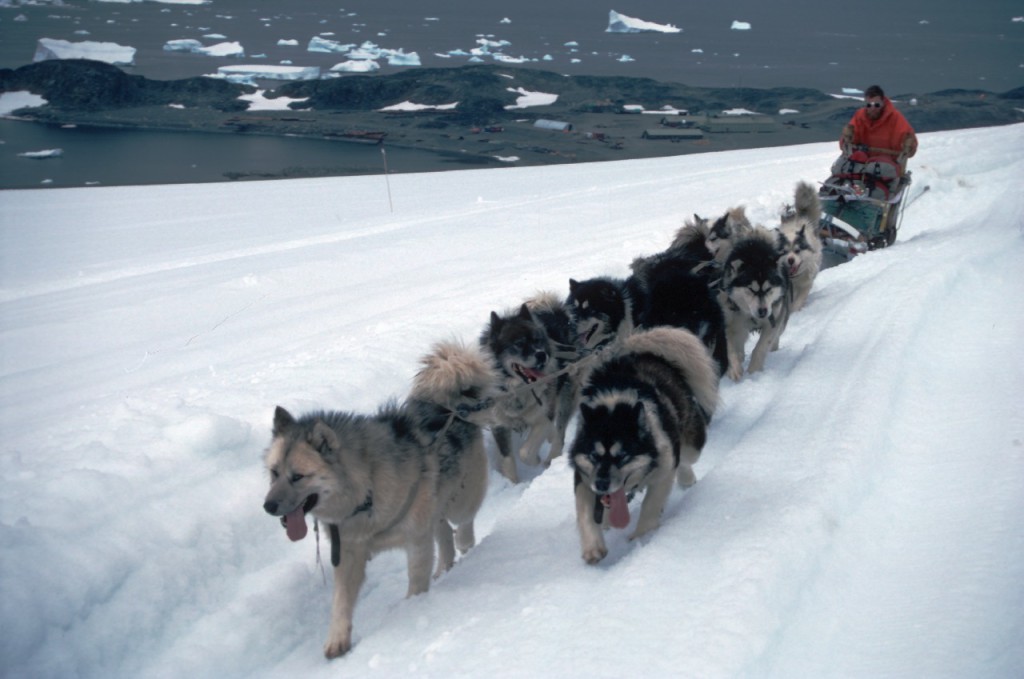A statue of a sledge dog, created by sculptor David Cemmick to commemorate an era when huskies supported Antarctic field travel was unveiled at the British Antarctic Survey (BAS) Cambridge offices on Saturday 4 July 2009.
Voluntary subscriptions from around the world helped to raise the money to commission the life size bronze statue from the Cemmick & Wylder Studio in Lancashire. The statue is a monument to the former husky dog teams that worked with Antarctic researchers. It carries a plaque listing all the former Falkland Islands Dependencies Survey/British Antarctic Survey Cambridge husky dog team names with the inscription “Erected by their companions and friends 2009”
Huskies were used to support field parties from 1945–1994. The first husky dogs were imported from Labrador for the second year of Operation Tabarin, the secret wartime expedition which led to the formation of the British Antarctic Survey. The last huskies were removed from the continent in January 1994 under the terms of the Antarctic Treaty Environmental Protocol.
The last Antarctic husky dog sledge journey — which commemorated 50 years of Britain’s scientific research — travelled across Alexander Island. Two men from BAS and 14 huskies sledged in an area the size of Denmark that lies to the west of the Antarctic Peninsula.
There are few parts of Antarctica that have not been trodden by the feet of the husky sledge dogs and few men would have completed their journeys without them.

